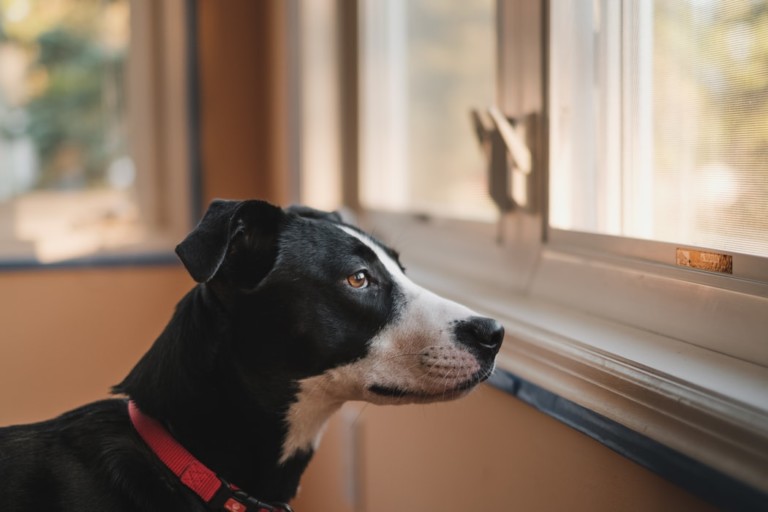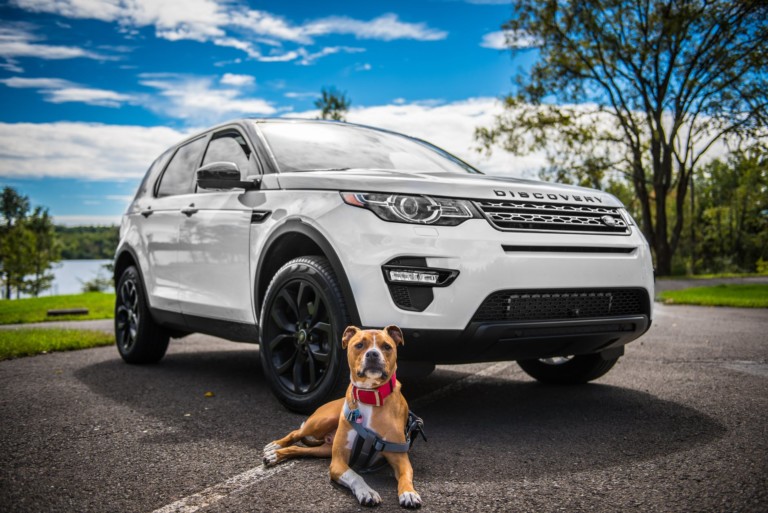{This post may contain affiliate links. This means we may make a small commission at no extra cost to you. This website is a participant in the Amazon Services LLC Associates Program. As an Amazon Associate we earn from qualifying purchases. We only recommend products that we believe will be of value to our followers. Click HERE to see our disclosure for details.}
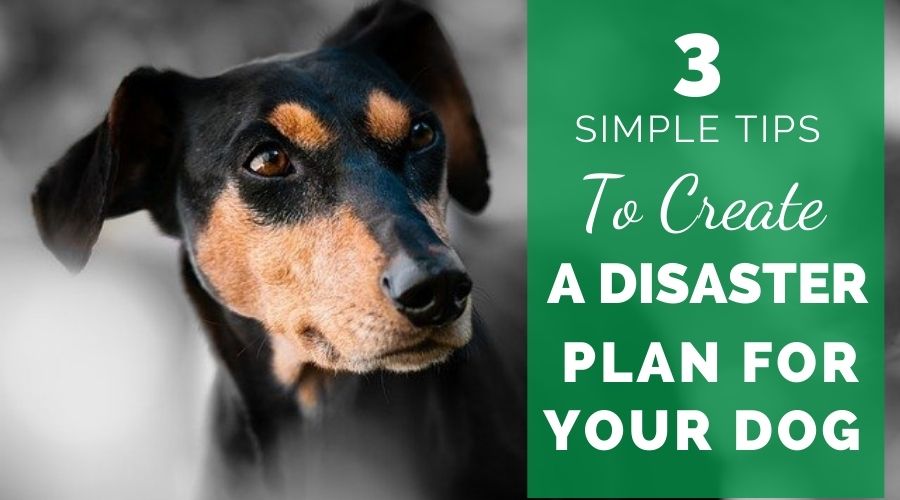
Disaster can strike at any time, without any notice at all, when you least expect it. Having a plan in place before disaster strikes can save both you and your dog’s lives. In this article, we will discuss some important things to keep in mind when you create a disaster plan for your dog.
1. Create A Plan For Your Home
There are many disasters that can occur at your home. Fires, earthquakes, tornadoes, etc are just a few. In times like this, you will need a disaster plan for your dog that involves getting your dog out of your home safely.
- If you live in an apartment, consider putting an ‘Dog Inside’ sign on your door. In case of fire, your dog’s chances of survival may increase if the firemen know that he’s inside.
- Keep carrying cases, leads, etc. in an easily accessible location. If you must leave quickly, time spent looking for these items is time lost.
- Exchange your house or apartment key with a trusted neighbor. Exchanging keys with a neighbor offers the benefit of proximity. Should an unexpected crisis arise, your neighbor can reach your dog quickly. Friends or family may not know about the problem until it is too late.
- Make a Plan. Discuss what to do in case of emergency. Do you have a cell phone? Make certain your neighbor has the number as well as any additional telephone numbers where you can be reached, such as work or family. Write them on an index card in bold, large print, and laminate it.
Click on the images below to check out these “Pets Inside” signs, stickers and decals on Amazon.



If you have more than one pet, make certain your neighbor has the following information:
a. The Number of Pets You Have.
If they know how many pets they need to find, chances increase greatly all will be rescued.
b. What Type of Animals You Have.
If you have a goldfish and your neighbor is looking for a dog, the goldfish’s chances of rescue drop. Make certain you are clear regarding the type of animal your neighbor should find.
c. Location of Pets In Your Home.
This is important for caged animals such as birds, snakes, hamsters, etc. Do you keep your dog crated in the bedroom? Let them know. The less time your neighbor spends searching for your pets, the more time they have to get them out quickly and safely.
d. Names of Your Pets
If your neighbor can’t find your pet, your pets may respond if their names are called. Will they come when you whistle? Tell your neighbor. The more specific information they have, the better your pet’s chance of rescue.

2. Have A Plan In Place For When You Are Out Of Town
Before you leave for a vacation or an extended trip, talk with the person who will be caring for your dog. Make certain it is someone you trust, such as a responsible family member, friend, or neighbor. If you use a dog sitting service, check their credentials before you leave. Ask for names of other clients who have used their services and call them to see if they were pleased. Better to know before you go rather than returning to an unpleasant surprise.
Discuss specifically what your sitter would do if a crisis arises and always leave contact numbers where you can be reached (hotel, cell phone, etc).
Points to consider:
- If a problem occurs, will your sitter take your dog until you return? If not, give them the name and telephone number of a friend, family member, kennel or doggy spa they can contact to take your dog.
- If an evacuation occurs, will your sitter take your dog? If not, make sure you know someone who the sitter can contact who will take them or find another sitter.
- In case of evacuation, give your sitter the telephone number of a family member or friend outside the effected area who can act as a contact. If you and your sitter cannot reach each other, you can each call the contact who can help relay information.
- If one must leave the area, prearrange with family or friends within driving distance to take your dog. If you have more than one pet, ask in advance to make certain they can house all of them. If not, find others who can.
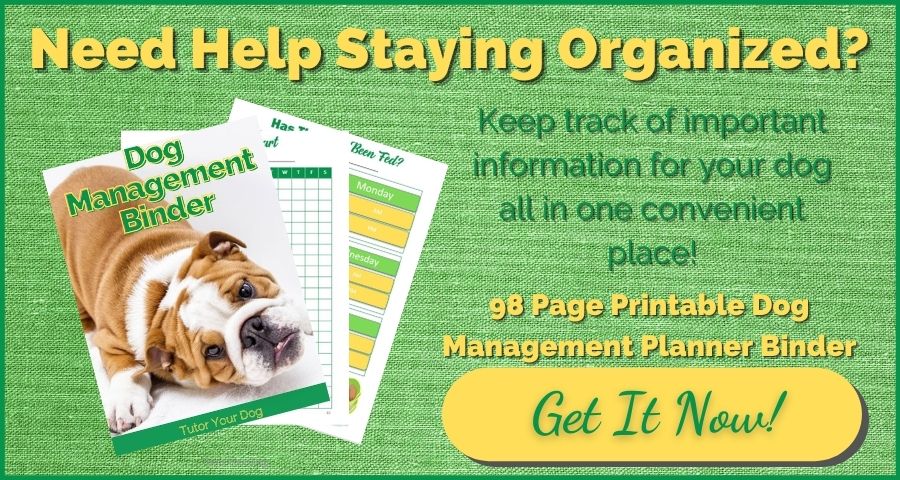
3. Create A Disaster Plan For Your Dog In The Case Of Evacuation
If the situation becomes so dire you must evacuate, consider the following tips. Generally, time is of the essence.
- Leave as quickly as possible and take your dog with you! Dont leave your dog behind thinking you can return and get him later. Very often, you will not be permitted to return until the crisis is over.
- If you are driving, load up your dog and hit the road. If you can’t take your dog where you are going, use your back up family member or friend plan first. Then your dog friendly lodging or rescue shelter options. If worse comes to worse, you may be able to find someone along the way who can help you.
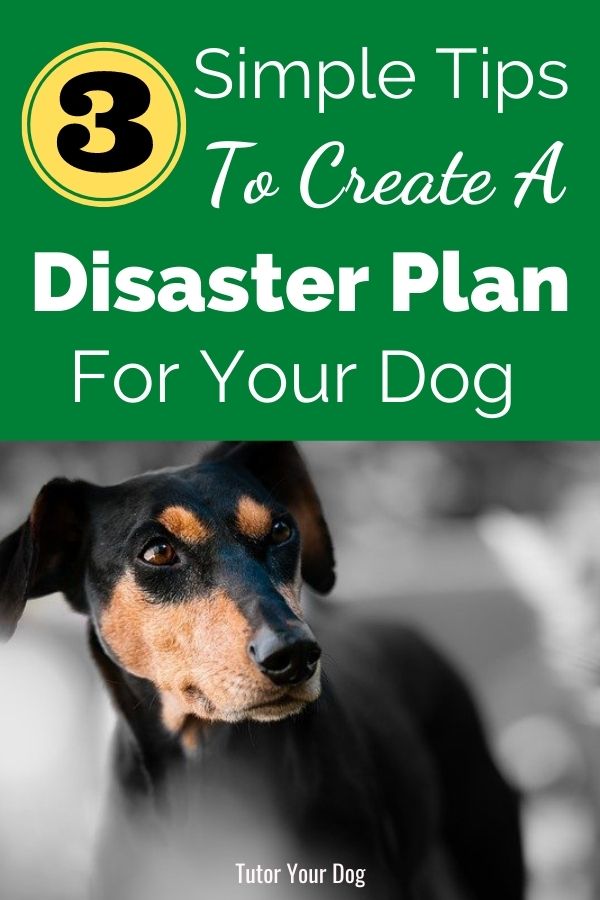
There are two things that you should do even if you don’t feel like you don’t need a diaster plan for your dog in your area. Proper identification for your dog as well as having important phone numbers all in one place can save your dog’s life if he’s ever in lost or in danger.
Proper Identification
Make certain your dog has proper identification. Include your last name and telephone number as well as the dog’s name on the ID tag. If you have one, consider using a cell phone number in case you and your dog are separated and you can’t go home. If your dog isn’t microchipped, you should consider having this done. Dog tags can get broken so if you dog is found and taken to a vet, he can be scanned for a microchip.
Click on the images below to check out dog ID tags and microchips on Amazon.


Collect Important Phone Numbers
Begin collecting important telephone numbers and information now so you have them if you need them. Your list should also include your vet and a 24 hour animal hospital. Should you be displaced, know where to go. If you cant reach friends or family, the names, addresses, and telephone numbers of hotels and motels which accept pets can be a life saver.
Hopefully you will never need a disaster plan for your dog but it’s a great idea to have one just in case the need ever arises. What are some things in your disaster plan? Let us know in the comments below.


